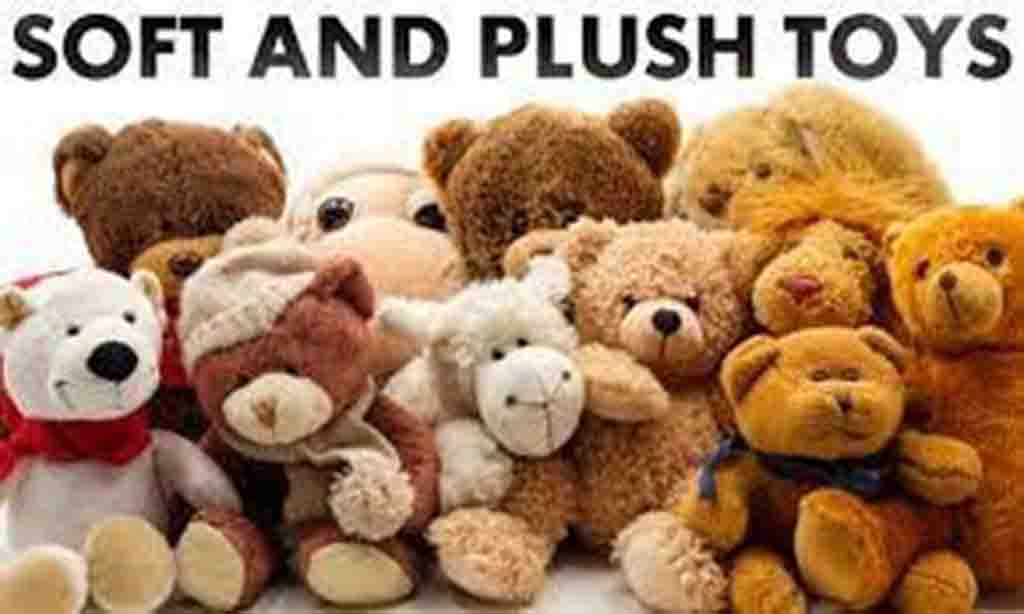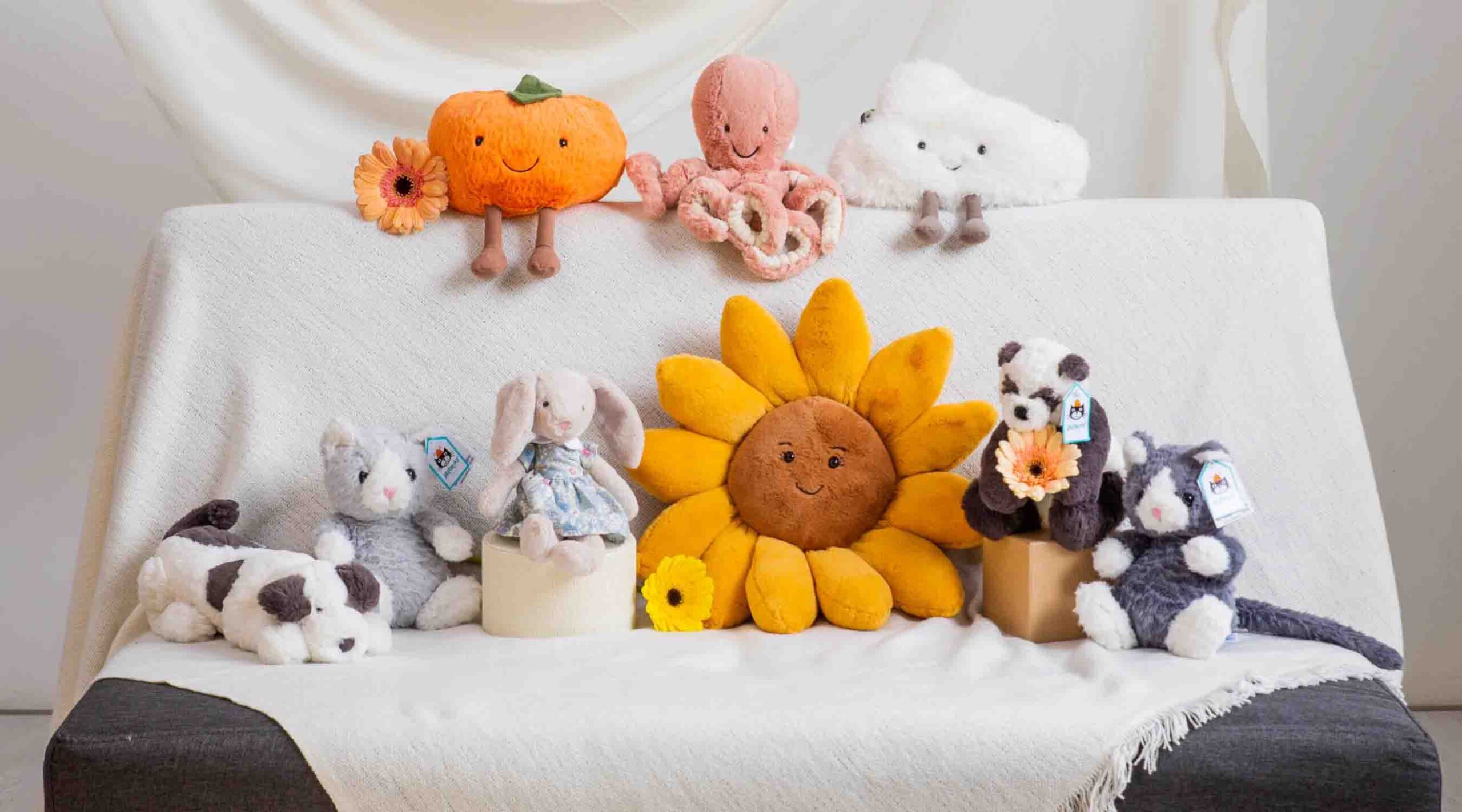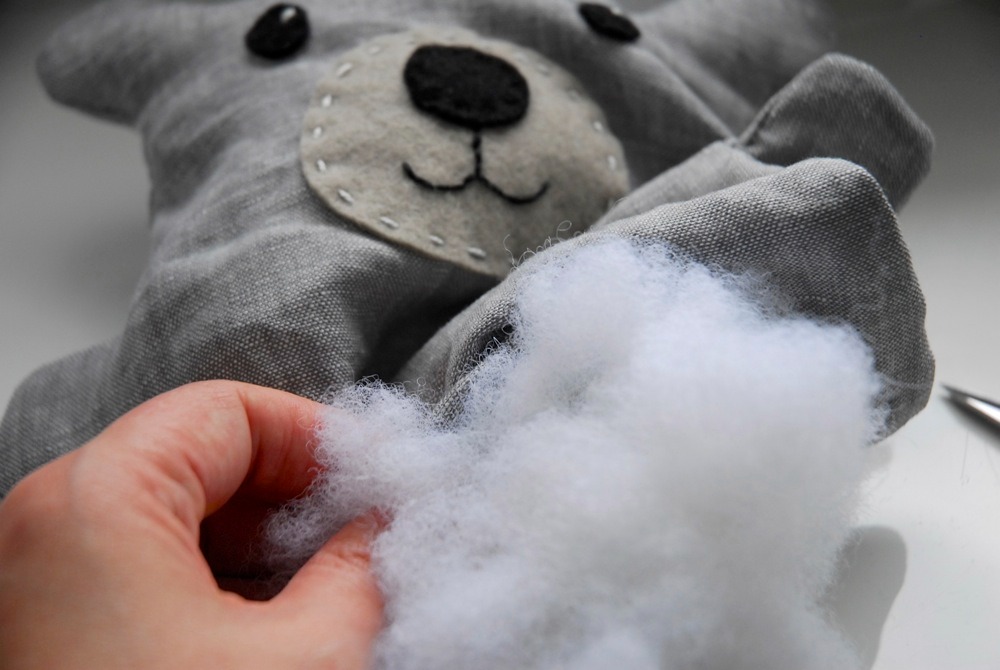The softness and appeal of plush dolls depend heavily on the fabrics used in their construction. Each fabric brings unique qualities that influence texture, durability, safety, and overall market positioning. Whether you are a retailer, brand owner, or wholesaler, knowing the characteristics of these fabrics helps you make better sourcing decisions.
This guide explores 10 of the most popular soft fabrics used in plush doll manufacturing and explains why each fabric matters in global markets.
Cotton Fabric for Stuffed Toys

Cotton remains a classic fabric choice for plush dolls because it is natural, breathable, and safe. Its hypoallergenic qualities make it particularly suitable for babies and toddlers.
Advantages of Cotton
- Gentle on sensitive skin.
- Breathable and lightweight.
- Can be organic for eco-friendly appeal.
Considerations
Cotton may wear out faster than synthetics and is harder to dye in vibrant shades, but it appeals strongly to eco-conscious buyers.
| Attribute | Rating | Market Value |
|---|---|---|
| Softness | High | Comfort for infants |
| Durability | Medium | Moderate lifespan |
| Eco Score | High | Sustainable & natural |
Polyester Fabric for Stuffed Toys

Polyester dominates the plush industry for its versatility, durability, and softness. Fabrics like velboa, fleece, and minky are all polyester-based.
Advantages of Polyester
- Extremely soft and resilient.
- Easy to dye in bright, lasting colors.
- Cost-effective for mass production.
Considerations
Though not as eco-friendly as cotton or bamboo, polyester is widely accepted due to its balance of quality and price.
| Attribute | Rating | Market Value |
|---|---|---|
| Softness | High | Universal softness |
| Durability | High | Long-lasting |
| Cost | Low | Affordable for bulk |
Fleece Fabric for Stuffed Toys

Fleece is known for its warm, cozy texture and is often used in winter plush collections. It is soft, insulating, and durable even after repeated washing.
Advantages of Fleece
- Provides warmth and comfort.
- Resistant to pilling with proper care.
- Lightweight but insulating.
Considerations
Fleece is not always breathable, but it is perfect for cozy plush toys marketed in colder regions.
| Attribute | Rating | Market Value |
|---|---|---|
| Softness | High | Huggable feel |
| Durability | High | Resists wear |
| Popularity | High | Seasonal plush demand |
Velboa Fabric for Stuffed Toys

Velboa is a short-pile plush fabric that provides a sleek, smooth finish. It is commonly used for toys that require detailed embroidery or printing.
Advantages of Velboa
- Smooth texture with minimal shedding.
- Strong and resilient for everyday play.
- Cost-efficient for mass-market plush.
Considerations
Velboa is not as soft as minky but is ideal for plush toys requiring durability and fine detailing.
| Attribute | Rating | Market Value |
|---|---|---|
| Softness | Medium-High | Smooth, sleek finish |
| Durability | High | Resistant to rough play |
| Cost | Low | Excellent for bulk |
Minky Fabric for Stuffed Toys

Minky fabric is renowned for its ultra-soft, luxurious texture, making it a favorite for premium plush toys and baby products.
Advantages of Minky
- Silky, comforting touch.
- Available in textures like raised dots for sensory appeal.
- Vibrant and long-lasting colors.
Considerations
Minky is slightly more expensive than polyester or fleece, but it creates a premium feel that justifies higher price points.
| Attribute | Rating | Market Value |
|---|---|---|
| Softness | Very High | Luxurious comfort |
| Durability | High | Premium quality |
| Cost | Medium | Suited for high-end plush |
Faux Fur Fabric for Stuffed Toys

Faux fur is chosen for realistic plush animals, mimicking the appearance of natural fur without ethical concerns.
Advantages of Faux Fur
- Realistic look for lifelike designs.
- Wide range of lengths and textures.
- Adds high perceived value.
Considerations
Requires careful maintenance and is best suited for collector’s items or premium plush lines.
| Attribute | Rating | Market Value |
|---|---|---|
| Realism | High | Lifelike appeal |
| Softness | Medium | More visual than tactile |
| Market Use | Premium | Collectibles & gift plush |
Velvet Fabric for Stuffed Toys

Velvet offers a luxurious, elegant texture that elevates plush toys into premium products.
Advantages of Velvet
- Smooth and glossy finish.
- Adds sophistication to collector or gift plush.
- Strong brand differentiation.
Considerations
Velvet is harder to maintain and is best used in decorative or commemorative plush collections rather than everyday toys.
| Attribute | Rating | Market Value |
|---|---|---|
| Softness | High | Premium touch |
| Durability | Medium | Requires care |
| Market Use | Niche | Collectors & décor plush |
Flannel Fabric for Stuffed Toys

Flannel is a soft, brushed fabric known for warmth and coziness. It is commonly used in bedtime or seasonal plush toys.
Advantages of Flannel
- Warm and comforting.
- Affordable and easy to produce.
- Lightweight yet insulating.
Considerations
Not as durable as polyester or fleece, but very appealing in colder climates.
| Attribute | Rating | Market Value |
|---|---|---|
| Softness | High | Gentle touch |
| Warmth | High | Perfect for bedtime plush |
| Cost | Low | Affordable production |
Corduroy Fabric for Stuffed Toys

Corduroy provides a unique ribbed texture that adds charm and distinction to plush dolls.
Advantages of Corduroy
- Distinctive ridged surface.
- Highly durable for long-term play.
- Vintage or retro appeal.
Considerations
Not as soft as minky or fleece, but valued for its tactile uniqueness.
| Attribute | Rating | Market Value |
|---|---|---|
| Softness | Medium | Textured feel |
| Durability | High | Long-lasting |
| Market Use | Niche | Retro-style plush |
Bamboo Fabric for Stuffed Toys

Bamboo fabric is a sustainable alternative that is gaining popularity in eco-friendly plush toy production.
Advantages of Bamboo
- Naturally hypoallergenic and antibacterial.
- Soft and breathable.
- Biodegradable and sustainable.
Considerations
Bamboo fabrics are more costly but align strongly with eco-conscious consumer trends, especially in Europe and North America.
| Attribute | Rating | Market Value |
|---|---|---|
| Softness | High | Eco-friendly comfort |
| Eco Score | Very High | Sustainability leader |
| Cost | Medium-High | Appeals to niche markets |
Conclusion
The 10 fabrics most commonly used in plush dolls each bring distinct qualities. Cotton and bamboo highlight eco-friendliness, polyester and fleece dominate mass-market plush, minky and velvet elevate premium lines, and faux fur, corduroy, and flannel provide unique textures and seasonal charm.
At Kinwin, we guide buyers in selecting fabrics that align with their market—whether it’s eco-friendly bamboo, luxury velvet, or cost-efficient polyester. Every plush doll we manufacture meets EN71, ASTM, CPSIA, and ISO standards, ensuring quality and safety.
📧 Contact us at [email protected]
🌐 Visit kinwintoys.com
Let’s create plush dolls that combine softness, safety, and market appeal.







